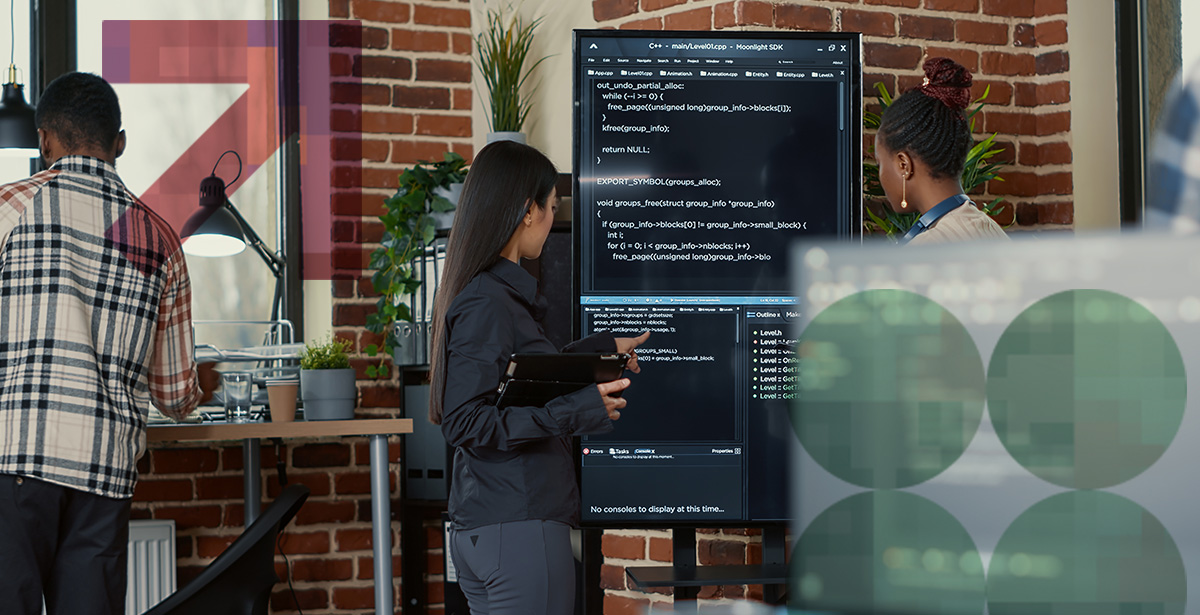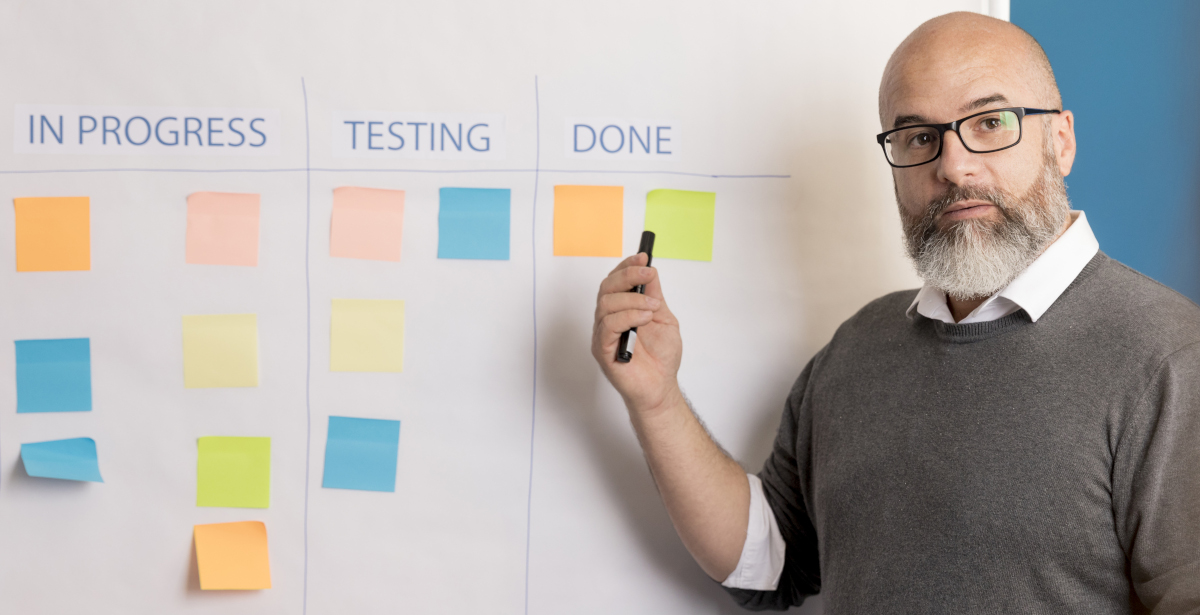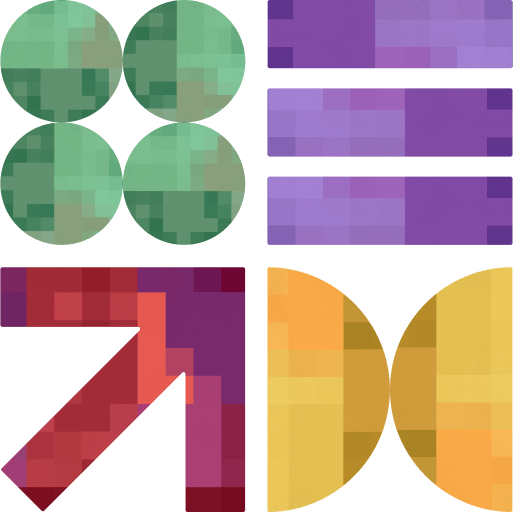Software Engineering Models 101 – An In-Depth Guide

Every great software product starts with a plan, and that plan is often shaped by a software engineering model.
Software engineering models act as roadmaps that guide teams from an idea scribbled on a whiteboard to a polished application in users’ hands. While development teams adhere to them, you too should understand how they work and how to choose the one that aligns with your project’s needs.
💡 Get familiar with everything the software engineering process is all about, and what it isn’t. Software engineering entails requirements gathering, design, testing, deployment, and maintenance. The more you know what truly defines the process, the better you’ll avoid common pitfalls and deliver lasting value. Understanding the boundaries is just as important as mastering the details. So, find out about any misleading myths of the custom software development process too.
What Is a Model in Software Engineering?
Before delving into software models, let’s get their definition straight.
In software engineering, a model is a structured approach that defines how software should be planned, designed, developed, and maintained.
Instead of jumping straight into coding, teams follow a model to ensure work is organized, risks are managed, and goals are met efficiently. Moreover, they address critical questions like “what comes first?” and “how do we measure progress?”.
Each of the software engineering models you’re about to discover offers developers an edge. But only if they choose the right one for the project at hand.
Not every project has the same requirements. Some mandate strict structure and predictability, while others thrive on flexibility and quick iterations.
So, the wrong model can slow progress, inflate costs, or even derail the project. On the other hand, the right one can align with the team’s goals, your expectations as the client, and the complexity of the software. This, in turn, increases your chances of success.
Top 5 Software Development Process Models
For years, the Waterfall model was the go-to model for creating all types of software. However, many models have popped up since then, providing a unique framework for how work should flow.
Let’s take a quick look at the five popular models shaping today’s innovative solutions.
1) Agile Software Engineering Models
Agile leads the list of popular development models. According to Digital.ai’s 17th State of Agile report, models under this umbrella term are the most used by developers. Around 86% used Agile models while only 14% used other types.
The main models mentioned in the report are:
- Scrum – This Agile framework organizes work into short sprints, and emphasizes collaboration, defined roles, daily stand-ups, and continuous improvement
- Kanban – Kanban is a method that uses visual boards to track workflow, focusing on limiting work-in-progress and optimizing efficiency. It improves transparency, highlights bottlenecks, and supports continuous delivery without fixed iterations.
- Extreme Programming (XP) – XP promotes technical excellence via practices like pair programming and test-driven development. It improves code quality, adapts quickly to change, and fosters close collaboration with stakeholders.
- Iterative – Like other Agile methods, the Iterative model builds software in small cycles, refining with each version. Feedback is integrated early, reducing risks and allowing gradual improvements until the final solution is achieved.
- Lean Startup – This model focuses on experimentation and validated learning. It reduces waste and helps teams develop products customers actually want with minimal resources.
What makes these methods so popular is their flexibility, speed, and focus on customer-centric development.
Unlike rigid models, Agile adapts to change, encourages collaboration, and delivers working software in short cycles. This, in turn, reduces risks, ensures continuous feedback, and keeps projects aligned with real user needs.
2) DevOps
DevOps is one of the relatively newer software engineering models out there. It’s a modern approach that focuses on uniting development (Dev) and operations (Ops) teams into a single, collaborative workflow.
Traditionally, Dev and Ops worked in silos. As a result, projects experienced delays, miscommunication, and inefficiencies.
On the other hand, DevOps promotes automation, continuous integration, and continuous delivery (CI/CD). It ensures that software is developed, tested, and deployed seamlessly, creating a faster and more reliable process.
The real strength of DevOps lies in its benefits.
Organizations adopting this model can –
- Accelerate time-to-market with rapid release cycles
- Improve software quality through automated testing
- Resolve issues quickly, reducing costly downtime
- Enhance team collaboration
- Increases an organization’s adaptability to changing business needs
By combining speed with stability, DevOps has become a go-to model for companies aiming to innovate efficiently while maintaining a high level of performance and reliability.
💡 When adopting DevOps, don’t just focus on automation tools. Whatever DevOps advisory services you choose, make sure they can help you establish a culture of collaboration between development and operations. Tools accelerate delivery, but culture ensures long-term success and sustainable innovation.
3) V-Model
Closely related to the traditional Waterfall model, the Verification and Validation Model emphasizes testing at every development stage.
For every step on the development side (requirements, design, coding), there is a corresponding testing phase on the validation side (unit testing, integration testing, system testing). This mirrored structure creates the ‘V’ shape.
What makes the V-Model in demand is its focus on discipline and quality. With testing at each phase, defects are caught early, reducing the risk of major issues later.
That said, it’s relatively more rigid than other software engineering models, making it less suitable for projects with evolving needs.
Overall, it’s valued for reliability, structured processes, and delivering software that meets strict compliance or safety standards.
4) Spiral Model
The Spiral Model combines elements of both iterative development and risk management, making it ideal for large, complex, and high-risk projects.
Development follows a spiral-shaped path where each loop represents a phase: planning, risk analysis, development, and evaluation. This cycle repeats until the final system is ready.
The model is a great one if your project requires identifying and mitigating risks early. By analyzing potential problems at each iteration, teams avoid costly mistakes while incorporating feedback and improvements as they move forward.
This model further allows for incremental releases, ensuring visibility to you and other stakeholders.
Just keep in mind that the Spiral model can be expensive due to repeated cycles and risk analysis. Despite this, you should consider it for mission-critical projects where risk management and flexibility trump speed.
5) The Rational Unified Process (RUP)
Created by IBM for structured software projects, the Rational Unified Process (RUP) is a framework-based development model.
It divides development into four iterative phases: Inception, Elaboration, Construction, and Transition. Each phase delivers measurable results, ensuring steady progress and reducing risks.
RUP’s strength is its balance of structure and flexibility. On one hand, you get detailed guidelines, roles, and best practices. On the other, the model supports iterative development and adapts to project needs.
By emphasizing architecture, documentation, and incremental delivery, it ensures both short-term progress and long-term stability. That’s why it’s one of the best software engineering models for large-scale, enterprise-level projects that require discipline and stakeholder involvement.
Overall, it’s appreciated for its rigor, adaptability, and ability to scale to complex software systems where both precision and collaboration are essential.
How to Choose the Right Software Engineering Modelling Method
After finding out about the models, you’re probably itching to use them. But as you know by now, selecting the right development model is crucial for building successful software.
Ideally, your chosen full cycle software development company will take charge of this step. But it’s always a great idea to understand your development team’s decision.
The choice usually depends on the following main factors –
- Project Requirements – If requirements are well-defined and unlikely to change, structured models like the traditional Waterfall or V-Model may work. For evolving needs, Agile or Spiral is better.
- Project Size and Complexity – Large, high-risk projects often benefit from Spiral or RUP. On the other hand, smaller projects may thrive under simpler, iterative methods.
- Timelines – Tight deadlines may require Agile or DevOps to deliver incremental value quickly. Meanwhile, long-term projects may allow more structured models.
- Team Expertise – Your team’s skills play a vital role in choosing from software engineering models. For instance, Agile requires strong collaboration whereas the V-Model demands testing discipline.
- Stakeholder Involvement – If you wish to be contacted for regular updates and feedback, Agile and Lean Startup are great. Both ensure continuous engagement.
- Risk Tolerance – Risk-heavy projects benefit from Spiral’s emphasis on analysis. On the other hand, low-risk, straightforward projects can follow the Waterfall method.
- Scalability and Adaptability – For enterprise-level or evolving projects, RUP and DevOps provide scalability and long-term flexibility.
Ready to Start Working on Something New?
Let our experts know how they can help you transform your ideas into working solutions. Contact us via the form below, and let’s innovate together.





